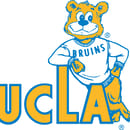When How to Train Your Dragon came out in 2010, it easily stole my 12-year-old heart with its dragons and nerdy, scrawny hero. Having grown up with The Lord of the Rings and The Chronicles of Narnia, it was the perfect cartoon franchise to remind myself that fantasy did not have to possess grand themes of good versus evil. It could also be fun, childish and still touching. If anything, the film was a first worthy sign in a pre-Game of Thrones world that the fantasy genre appealed to the masses, not just the little nerds at the back of the theater, like me.
Four years later, How to Train Your Dragon 2 was a masterful sequel. Grappling with familial love, individuality and exploration, it easily touched the heart without trying too hard, while dealing out plot twists and an unforgettable ending. I may have even cried. Hiccup’s awesome comeback as a swashbuckling, handsome cartoon young adult also gave plenty of teenagers hope that we may all outgrow our awkward puberty phases. Following two great films and a promising trailer, DreamWorks set up high hopes of How to Train Your Dragon: The Hidden World as a smash finale that fans could not miss. However, unlike in the second film, Hiccup neither develops cooler weapons nor continues to push boundaries as a dragon rider, and the character development seems to have run its course. Existing relationships are not anymore fleshed out than in the previous movie, and instead spend its time preoccupied with a not-so-threatening villain, a one-dimensional love interest and exploration to the Hidden World.
First off, Valka, Hiccup’s long-lost mother, has returned from rescuing dragons to Berk after a tension-filled reunion with her son and husband. Much of the first two films’ emotional pull was anchored in the relationship between Hiccup and his father, Stoick. Stoick was a tough-love kind of father, an admirable chief and dragon hunter, but he willingly changed his perspective on his world out of love for his son. A refreshing and progressive change to a cartoon history of a lack of parental figures, supportive ones at that. There was a touch of realism to it: Hiccup was a kid trying to find his own way in a world of tradition, pushing against the traditions established by the older generations.
However, after Stoick’s death, that same emotional pull and realism could have been applied to the relationship between Valka and Hiccup. After all, the lady missed 20 years of her son’s life; she has plenty to catch up on. However, Valka never really transcends beyond her role as a cool dragon whisperer and dowager queen. She recedes to the background, pushing Astrid to take on her role as the future queen and wife of Berk, but never actually spends too much time with Hiccup.
As for the villain, a bunch of a warlords outsource their dragon hunting to Grimmel the Grisly, notorious for having hunted all the Night Furies to near extinction. The warlords were useless and one-dimensional. Apparently Grimmel hunts Night Furies for fun, but he wasn’t very menacing or threatening, in fact he was funnier than any other comic relief when he pointed out his employers’ immense incompetence.
The Light Fury, Toothless’ new love interest, is not nearly as anthropomorphized as Toothless, so her thoughts and motivations are far less accessible and sympathetic. She seems to like Toothless well enough, but we know so little about her that one wonders what pull she has on him. Regardless, she is rendered beautiful and the animation stuns in her shiny, iredescent scales as they glint in the sun, her softer lines and movement and her slightly more reptilean eyes. We learn that Night Furies mate for life, but the “love” is questionable since Toothless and her are the last two of their species. Whether driven by instinct, a last-ditch desire for reproduction or genuine love, Toothless decides she’s the one and spends much of the film trying to court her.
Of course, he fails several times because he doesn’t have other Night Furies teaching him what to do. But these courtship scenes were lovely as they portrayed how awkward and unsteady flirting can be. Some of the best scenes in the film, we simply watch the dragons convey thoughts and emotion through body language, facial expression and other non-vocal cues. The titular Hidden World was underwhelming and not so well hidden. Other than some fancy flying, there is no gate or barrier between the Hidden World and the humans’ world, and Hiccup and Astrid find their way in quite easily. Despite that, it is beautiful with its saturated colors and incandescence. The animation really shines in the flying sequences and in the Hidden World, though regardless of Hiccup’s pursuit of it, the film doesn’t spend much time there.
By the end of the movie, Grimmel somehow gains control of the Light Fury, and Hiccup atop Toothless make chase. Toothless gets shot with a drugged dart leaving him incapacitated and unable to fly. Hiccup frees the Light Fury, and he urges her to save him. What I have always loved and venerated in these movies was the deep friendship between Hiccup and Toothless, and his ready sacrifice for Toothless, one of many, was a wonderful culmination of their relationship. Hiccup is willing to plunge to his death with Grimmel, and honestly I was ready to accept Hiccup’s death. A dragon rider dying for the sake of his dragon, not a terrible way to go. Of course though we’ve seen a breaded adult Hiccup in the trailers and teasers, so he is saved by the Light Fury, somehow convincing her that he isn’t so bad after all.
However, the timing of the scene just ruined it. Toothless was just nearly unconscious, but as soon as Hiccup is rescued, 10 to 15 minutes later, the dragon is somehow coherent once again. Even though his rider just nearly gave up his life for his dragon’s, Toothless looks beyond the clouds. Hiccup then knows he must make another sacrifice and let his dragon go to where he belongs. Just as Toothless is the rightful alpha of the dragons in the Hidden World, Hiccup is the rightful chief of Berk. Hiccup must let go of his dragon to allow him to properly assume his role as king and to keep him, and all the other dragons, safe from the harm of hateful and greedy humans.
Some liken the relationship between Hiccup and Toothless to that of an owner and a dog, but that cheapens and oversimplifies it. In the second film, Valka says that the two are the same age, so it is no wonder they get along. That added another dimension to them as two best friends bonded for life, a friendship deep enough to extend beyond species. A friendship that had brought compassion to an entire village of Vikings. Hiccup and Toothless both have proven several times that they are willing make sacrifices for each other, and the power of their friendship overcame their enemies.
The parallels between the two were also carefully well thought out and artful. Toothless is robbed of his tail and ability to fly, after Hiccup shoots him; whereas Hiccup is robbed of part of his leg and ability to walk (without a prosthetic), after Toothless saves him from near death. Their disabilities parallel each other and their initial physical dependence on each other is a physical manifestation of their emotional interdependence. One could not have become the man or dragon they are without the other. That’s what really irks me about the ending. A friendship like that is undermined at the last second and forced into a choked farewell a bit too soon.
Toothless’ glance to the Hidden World, so quick after Hiccup just readily almost sacrificed his life for his dragon, seems heartless. It was out of character for Toothless, considering that at one point he had refused a prosthetic tail because he did not want to fly without Hiccup on his back. With all this in mind, the goodbye was not that tragic or heartbreaking. It was certainly the right thing to do, to save the dragons, but the timing between freeing the dragons from the warlords to saying farewell forever was so limited that it made the whole thing less emotive. There was one detail I found moving: in the first film’s big bonding moment, Hiccup extends out his arm and waits for Toothless to touch his snout to Hiccup’s hand. In this film, with tears streaming down his face, Hiccup and Toothless assume the same positions, but this time Hiccup goes from touching Toothless to moving himself away, his arm still extended out until it drops. That inverse imagery of Hiccup letting go first is a physical portrayal of Hiccup’s sacrifice; Hiccup takes the first step to move away to encourage Toothless to move on.
Regardless of all this, composer John Powell deserves some recognition. He wrote the score for all three films in the franchise, but I particularly enjoyed how he conveyed the wonder and even effervescence of flying on a dragon’s back such as his “Romantic Flight” from the first film and “Once There Were Dragons” in this one.
I understand that this is an animated film made and marketed for children, but some fans grew up with the films. Perhaps to account for its young audience, the film leaned too heavily on humor and a fast pace, when it should have built further upon its strengths: complex relationships and portraits of realism within the fantasy genre. However, the last film in the franchise dealt with themes of leadership, young responsibility and separation. If the filmmakers thought the children could handle these more mature themes, they should have given the themes proper room to breathe and develop. How to Train Your Dragon: The Hidden World tried its best to follow its outstanding predecessors, but it fell short on several accounts. At least fans got to see the ending they knew inevitably would unfold, and had one last ride with our favorite characters Hiccup and Toothless.


